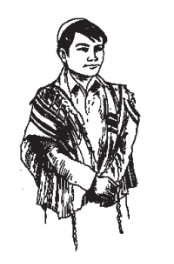“Behold, I will bring them from the north country, and gather them from the coasts of the earth, and with them the blind and the lame, the woman with child and her that travaileth: a great company shall return thither… Hear the word of the Lord, O ye nations, and declare it in the isles afar off, and say, He that scattered Israel will gather him, and keep him, as a shepherd doth his flock.”
—Jeremiah 31:10
“A country that’s divided surely will not stand / My past erased, no more disgrace / No foolish naïve stand / The end is near, it’s crystal clear / Part of the master plan / Don’t look now to Israel / It might be in your homelands.”
—Megadeth
“I don’t care to belong to any social organization that will accept me as a member.”
—Groucho Marx
Thirty hours by train due east from Delhi, across the late-autumn stubble plains of Uttar Pradesh, past the mud-thatch villages and spreading banyans of Bihar, I arrived bleary-eyed on the roiling Brahmaputra river at Guwahati, the ugly, sprawling capital city of the far northeastern Indian state of Assam. In the trees outside the train station, enormous fruit bats flopped awkwardly into their high roosts and dangled like snagged kites.
I had come across India to see for myself if the reports I had read were true: members of remote hill tribes, the Kuki-Chin-Mizo, living in the northeastern states of Mizoram and Manipur, believed that they were living descendants of Manasseh, one of the legendary ten lost tribes of Israel. Some of these people, former warriors and headhunters, had decided to return to their supposed biblical roots and live as observant Jews. Since the 1970s some 10,000 members of the Mizo (a collective term for several interrelated tribes that means “highlander”) have converted to Judaism, and at least 800 have migrated to Israel. They called themselves the B’nei Menashe, and if what they believed of their own history was true, their tribe, over three millennia, had wandered clear across Asia on the Silk Route and settled in the jungle-covered hills at the edge of the Golden Triangle. So circuitous was their Diaspora that they are the only group in the history of the world that can lay claim to building both the Egyptian pyramids and the Great Wall of China.
What could make a people, with no apparent context or prompting, convince themselves of so unlikely an origin? An elaborate hoax? A mass hallucination? A miracle? My travels around the sub-continent had taught me that scientific fact and ancient myth often found themselves given equal weight, and Western notions of...
You have reached your article limit
Sign up for a digital subscription and continue reading all new issues, plus our entire archives, for just $1.50/month.
Already a subscriber? Sign in





